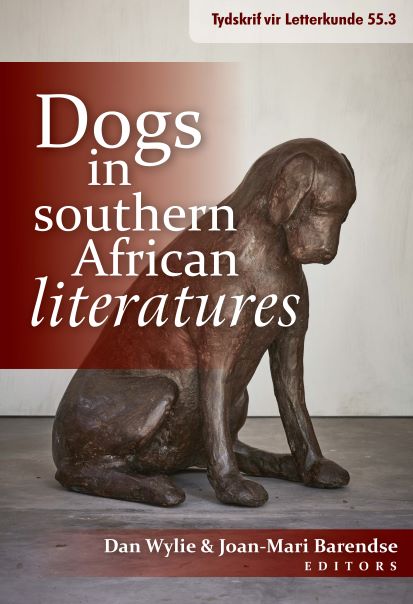Take a bow: Art and dog communication
DOI :
https://doi.org/10.17159/2309-9070/tvl.v.55i3.5503Mots-clés :
anthropomorphism, art, behaviour, dogs, languageRésumé
Bentham’s query “[…] the question is not can they reason? Nor can they talk? But, Can they suffer?” (Bentham 8) drew attention away from language and the interior life of animals and focused it instead on the question of suffering. Just what suffering is left to the human to decide; a debate, which forms a large part of the discourse in the animal rights movement. But what happens if we were to return to the unanswered part of Bentham’s quote, the questions that Descartes so famously answered in the negative: “Can they reason?” “Can they talk?” These questions have been banned by scientific and philosophical discourse up until recently when the burgeoning interest in the ‘animal question’ re-opened the debate. Making the assumption that animals can indeed ‘talk’ I investigate the nature of dog/human/dog communication using as a conduit the art of South African artists, Elizabeth Gunter, Daniel Naudé and myself. I propose that dog to human and human to dog communication relies on nonverbal means such as bodily semiotics, prosody and other ineffable means that are not dependent on symbolic language.
Téléchargements
Références
Beck, J. 2013. “Why we can’t say what animals think.” Philosophical Psychology, vol. 26, pp. 520–546.
Bekoff, M. “Observations of scent-marking and discriminating self from others by a domestic dog (Canis familiaris): tales of displaced yellow snow.” Behavioural Processes, vol. 55, no. 2, 2001, pp. 75–79.
Bekoff, M. “Wild justice and fair play: cooperation, forgiveness and morality in animals”, in The Animals Reader, eds. Kalof & Fitzgerald, 2007, pp. 72–90.
Bentham, J. “Principles of Morals and Legislation”. In The Animals Reader eds. Kalof & Fitzgerald, 2007, pp. 8–9.
Berger, J. “Why look at animals?” In The Animals Reader eds. Kalof & Fitzgerald, 2007, pp. 252–261.
Broglio, R. Surface encounters: Thinking with animals and art. University of Minnesota Press, 2011.
Carroll, L. The Complete illustrated works of Lewis Carroll. Chancellor Press, 1982.
Coetzee, J. M. The lives of animals. Princeton U P, 1999.
Derrida, J. The animal that therefore I am (more to follow). Transl. J Wills. Fordham UP, 2008.
Gunter, E, personal correspondence and interview. May 2016, Cape Town.
Haraway, D. When species meet. U of Minnesota P, 2008.
Kalof, L & A Fitzgerald, eds. The Animals Reader: The essential classic and contemporary writings, Berg, 2007.
Kafka, F. “Investigations of a Dog”. [Online]. Kindle edition. Trans. P. Strazny. . Accessed 15 April 2017.
Macey, D. The Penguin dictionary of critical theory. S.v. ‘logical positivitism’, ‘intentional fallacy’. Penguin, 2000.
Naudé, D. Animal Farm. Prestel, 2012.
Pather, J. ed. Catalogue for Spier Contemporary 2007 Exhibition. Africa Centre, 2007.
Safina, Carl. Beyond words: What animals think and feel. Kindle edition. Henry Holt and Company, 2015. Accessed 22 February 2016.
Schmahmann, B. Cocks, Asses &... (Catalogue for an exhibition held at the University of Johannesburg, 7–28 November 2007.) David Krut, 2007.
Wolfe, C. “In the shadow of Wittgenstein’s Lion: Language, ethics and the question of the animal”, in Animal Rites: American culture, the discourse of species and posthumanist theory, ed. C Wolfe. Chicago U P, 2003, pp. 44–94.
Woodward, W. The animal gaze: Animal subjectivities in Southern African Narratives. Wits U P, 2008.
Wynne, C. D. L. & Udell, M. A. R. (Second Edition) Animal cognition: Evolution behaviour & cognition. Palgrave Macmillan, 2013.
Téléchargements
Publiée
Numéro
Rubrique
Licence
(c) Copyright Tydskrif vir Letterkunde 2018

Ce travail est disponible sous licence Creative Commons Attribution - Partage dans les Mêmes Conditions 4.0 International.


 https://orcid.org/0000-0001-6465-6584
https://orcid.org/0000-0001-6465-6584


.png)